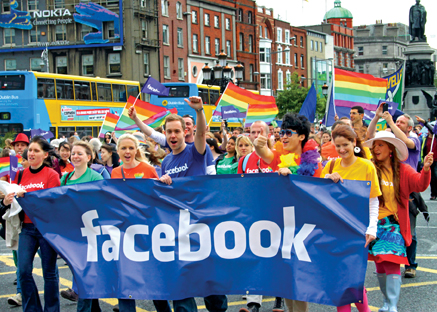
This year marks the 30th anniversary of the Dublin Pride Parade. The theme of the parade Live, Love & Be Proud, will be held on Saturday June 29th. A spectacle of equality – with its fair share of flamboyance – the gay community have fought some hard battles to get where they are today.
It started with the murder of Declan Flynn. Heading home after a night out, Flynn was chased by a gang of youths and beaten to death in Fairview Park, a known gay pick-up spot. After the murder, the killers – many in their early teens – were brought before the Late Judge John Gannon and handed down suspended sentences, outraging the LGBT community for the injustice of it all.
“Fairview Park was a pivotal moment for the LGBT movement. It was the beginning of what you might call an engagement,” says Brian Sheehan, Director of GLEN (Gay and Lesbian Equality Network).
After Flynn’s killing, Dublin Pride Parade was originally a protest movement – organised by the Gay Liberation Federation – but more importantly as a call to action for the oppressed members of the LGBT community who had largely been ignored by mainstream Irish society.
“Those early Pride events felt more like marches and protests than the parades and parties they have now become,” says Tonie Walsh, a long time LGBT activist. “One’s sense of Pride was truly shaped by protest,” he says.
The 1983 march was billed a ‘Gay Rights Protest March’, which included on its programme the unveiling of a pink triangle, a cheese and wine reception, movie screenings, a talk about the ‘straight alternative’, a disco, brunch, and, of course, the actual protest, the first incarnation of the Pride Parade.
“People, by and large, were quite good-natured, possibly bemused, certainly taken by surprise. I suspect we were all too excited to take notice of any distinctly homophobic reaction,” says Tonie.
The first Pride Parade coincided with a legal battle being waged by David Norris and Mary Robinson as part of The Campaign for Homosexual Law Reform. An early attempt by Norris to argue the constitutionality of the 1885 Offences Against the Person Act, and the Criminal Law Act, both of which had outlawed homosexuality, failed. He eventually won the case at the European Court of Human Rights.
Decriminalisation eventually came in 1993, the day before the annual Pride Parade – which by then had morphed from a protest movement, to one of celebration. Although it had taken six years to fully implement the Norris ruling, being gay was no longer a crime. The movement that had kicked off with the Flynn killing had finally reached a point of acceptance within Irish society.
“What is most significant today is the comprehensive body of anti-hate and anti-discrimination legislation on our statute books. The behaviour of the self-appointed, self-termed ‘queer bashers’ who robbed Declan of his life would simply not be tolerated today by any section of Irish society,” concludes Walsh.
Photos by Ross Waldron.
By Liam Cahill

